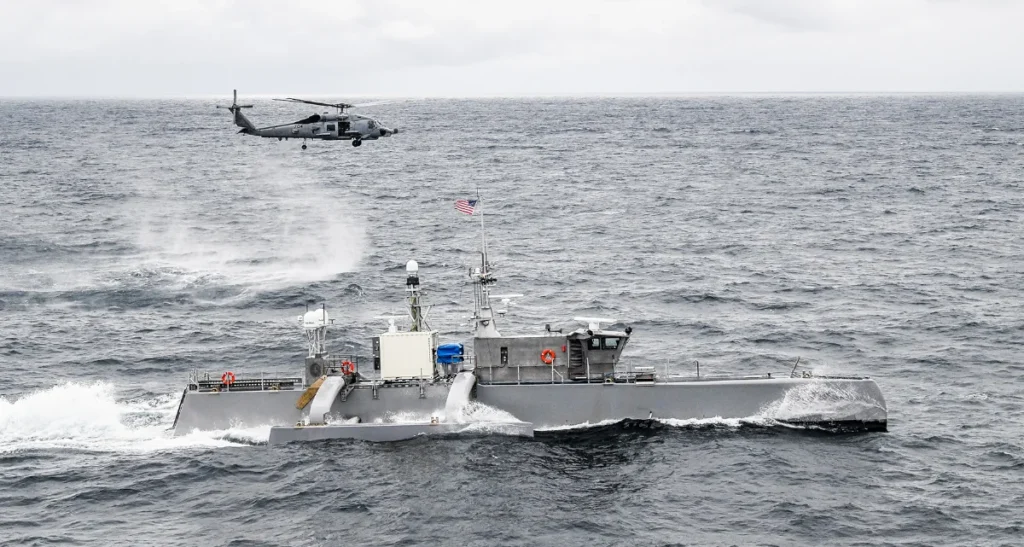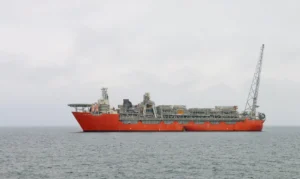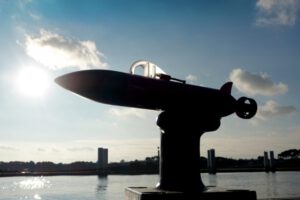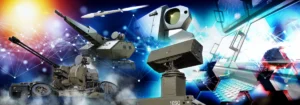
Unmanned Surface Vehicles (USVs) or ASVs (Autonomous Surface Vehicle) are remotely controlled or autonomous marine craft. They have been widely used in various military and police fields, such as Mine Countermeasures (MCM), Anti-Submarine Warfare, Special Operations Forces Support, Surface Warfare, Electronic Warfare, Maritime Security and Counter-Terrorism, Maritime Interdiction Operations Support, Illegal trades, Anti-immigration.
USVs vary in shape, size and configuration. Small USVs or ASVs platforms have demonstrated the capability of carry few sensors, tools and a small payload, while large vessels greater 7 m in length can be equipped with several sensors and devices. In the defense industry small and large vehicles are used depending on the task. The US Navy has been experimenting with unmanned sea vehicles of many different kinds for at least a couple of decades, unmanned undersea vehicles and unmanned surface vehicles.
ASVs can operate safely in hazardous areas, in poor visibility and at night. Smaller ASVs are typically fitted with cameras, lights, and sensors tools to enable observation and inspection tasks; larger vehicles can be equipped with sensors, weapons, or other payloads.
In cooperation with ONR (Office of Naval Research), DARPA (Defense Advanced Research Projects Agency) has developed an autonomous unmanned ship that could revolutionize U.S. maritime operations. The Sea Hunter, is an unmanned surface ship, or boat. It is a multihull vessel comprising a main hull and two smaller outrigger hulls, it is designed as a trimaran.
The Navy currently operates two medium-sized USV prototypes, Sea Hunter and Seahawk through the SURFDEVRON1 (Surface Development Squadron), which are based in San Diego. The Sea Hunter ASV/USV have demonstrated extended range and autonomous navigation transits with COLREGS (International Regulations for Preventing Collisions at Sea) compliant maneuvering, which is the ability of an unmanned surface vehicle to reliably obey the rules of the road at sea for avoiding collisions designed by the IMO (International Maritime Organization).
Sea Hunter and Seahawk operate independently, takes appropriate maneuvers to avoid collisions with other ships on the way there. The ASV/USV Operator plans the missions and does not pilot the vehicle. If necessary, the vehicle can be remotely operated. The Sea Hunter‘s task is to locate and track submarines, without the operator support, who would intervene to change or modify the missions.
The Sea Hunter is equipped with a satellite link which allows reliable communications and data collection included monitoring USV, two FURUNO RADARs (Radio Detection And Ranging) for detecting and avoiding other ships, involve two bands operating at different frequencies an X-band and an S-band, used to improve target resolution and seeing through heavy weather or precipitation. The Autonomous vessel includes another smaller radar, the imaging systems EO/IR (Electro-Optical/lnfra-Red), a stereo vision system for autonomous navigation, an anti-submarine warfare system, mine countermeasures such as mine-sweeping and Automatic ldentification Systems (AIS) transponders to provide position, identification, heading and other information collected by ground stations and other vessels. Vehicles like these can also be equipped with SONAR (Sound Navigation and Ranging), cyberwarfare and information warfare, acquisition and jammers or frequency jamming for the disruption of radio signals. Thanks the large size and wide space combined with the electric support the vehicle provides large payload capacity, the ability to continue operating when the weather gets bad and the seas get worse.
One of the benefits that a vessel like Sea Hunter brings is it reduces the requirement for survivability features, an essential requirement of manned vehicles that are fitted with defensive aid structures and tools to protect the vessel and crew.
The introduction of autonomous technologies are a promising future in the maritime sector and unmanned vehicles or vessels are expected to bring significant cost and environment benefits. In order to realize long endurance sailing task and improve the energy efficiency of USV, it is necessary to consider several factors including new energy sources. The USV driven by an electrical motor, takes many advantages in terms of emission and efficiency compared with the USV which use fossil fuel.
Generally the operational endurance of USV/ASV vehicles, is limited by the available battery charge. Some USV vehicles have endurance ranging from hours to weeks or months, and to thousands of kilometers. However the vehicle endurance depends on vehicle type, the size and shape, from speed and fuel.
Although alternative sources provide several benefits, the Sea Hunter is equipped with two diesel engines: one port, one starboard, which provide agility and versatility. With both engines, the vessel can get up to speeds in the ballpark of 26 or 27 knots. Full load displacement is about 135 tons, 140 tons, meaning without fuel, is just under 100 tons.
The Sea Hunter is made of foam core with fiberglass skins realized through Vacuum-Assisted Resin Transfer Molding (VARTM), a technique which can produce high-quality of composites, very light, stiff, and strong. In addition Akas are made of composite and Amas with the fiberglass.
Currently the US Navy is building two additional Overlord USVs in addition to the already operational RANGER and NOMAD. They are commercial fast supply vessels that have been converted to autonomous capability by OSD (Office of Secretary of Defense) SCO (Strategic Capabilities Office). They recently transitioned to the Navy in early March 2022.
LUSVs will serve as adjunct support affordably expanding afloat strike and anti-surface warfare capacity in assistance of manned surface combatants. The LUSV program supports the Navy’s Future Surface Combatant Force architecture by developing and fielding a relatively low-cost, high endurance vessel that complements manned surface combatants LUSVs will be physically larger to accommodate larger payloads.
LUSVs will be capable of weeks-long patrols and trans-oceanic transits and operate aggregated with Carrier Strike Groups (CSGs), Surface Action Groups (SAGs), or independently with appropriate levels of human oversight from an afloat or ashore control node.
Cover image: US Navy
Photo and text by
Jared Adams, Chief of Communications, DARPA
Lewis Aldridge, U.S. Navy spokesperson
Read other articles in the digital JP Mag
Paolo Mazzone
SubEng – HSE Adviser



